Body Talk is an ongoing series of conversations between Caden Gardner and I about Transgender Cinema as we prepare to write a book on the subject. The first of these discussions is on the classic Jonathan Demme picture, The Silence of the Lambs, which was just re-released on Blu-ray and DVD from the Criterion Collection. This is what we had to say:
WILLOW MACLAY: I think I watched The Silence of the Lambs for the first time on cable TV. It was one of those movies that would always be on Sunday afternoons in-between morning and evening church services. The lord was probably pleased that on this sabbath day I was celebrating a movie about a serial killer, but I was totally beguiled by this movie. I felt an immediate connection to Clarice Starling, and considering that this was pre-cinephilia years for me (I was probably around ten) it may have been the first time that I ever noticed the camera doing something to help inform what I was seeing in the image. Blade Runner was the first movie where I thought movies could be more than movies, but Silence was the first one where I saw form. This specifically happened when Clarice is running during that great opening, and eventually heads into the FBI building and boards an elevator where her body is completely overwhelmed in the frame by these bigger guys. It set the tone for the movie and I also think it set the tone for my cinephilia. I even wanted to be an FBI Criminologist at one point because of her, but I didn’t have the stomach for it so I settled for movies. How did you come to view The Silence of the Lambs, Caden?
CADEN GARDNER: I would say being an actual toddler when The Silence of the Lambs was released and then promptly swept the Oscars, that my first connection with the film were in promotional images. The poster for the film is so enduring with the moth covering Jodie Foster’s mouth. I would see the disc at a local Blockbuster and certain references to the film would pop up in my adolescence that I only retroactively get now, but when I saw it for the first time I was around 12. I was into true crime at an early age in watching Unsolved Mysteries re-runs on Lifetime (Robert Stack powah!) and I was pulled in by cases like Jonbenet Ramsey and then the notorious Clutter Family murders that became There Will Be Blood, but I would say I was still uninitiated about serial killers when I first came around to The Silence of the Lambs. I had no idea it was based on a book series and that the killers portrayed were based on real subjects, but I was absolutely enthralled and engaged with the film. I too loved Clarice Starling, I was a major Jodie Foster fan with Freaky Friday and Taxi Driver (yeah, watched that quite young) as my reference points. I just love her character and I would say in your piece you get into why she is so compelling, she’s in a man’s world. We see her character be a green investigator and then solve the case by the end. It’s an arc that can be done so perfunctory but in Jonathan Demme and Tak Fujimoto’s hands the images are so compelling and striking to watch happen.
WM: It’s funny that you mention the image of the moth covering Jodie Foster’s mouth, because you just reignited a memory from my youth where I was terrified of that image seeing it at my local video store, but also pulled in by its kind of repulsive quality. It struck something in me that I found viscerally terrifying, because I’ve always had this innate fear of bugs. When I was a child I learned that bugs could potentially crawl in your mouth while you sleep and I had nightmares about that for the longest time. I still carry a fear of bugs to this day.
Regarding Clarice Starling and how Demme and Tak Fujimoto shoot her. I think there’s this very strong connection to her through the way they frame her and use things like point of view shots to give us as an audience a way into the scenarios she is experiencing. In a physical sense we are right there with her and we’re meant to identify with her, and I think that amplifies any connotation of whatever feminist bent they were going for in making the movie. I’m unsure if I would call The Silence of the Lambs feminist, but I do think Jonathan Demme is a very humane filmmaker. He finds a way to empathize and ground our emotional reactions within a central character. I called this first person humanism in a piece for The Film Stage on either Lambs or Rachel Getting Married. I can’t remember which, but both of these movies have this very strong connection to a central female character as she’s going through these exponentially difficult tasks. The Family reunion at a wedding being much more terrifying than chasing a serial killer in my purview.
CG: I believe it was your Rachel Getting Married piece and yes, that wedding reception is its own unique horror because you are likelier to reunite with a family fuck-up or people you disappointed than a serial killer! But back to The Silence of the Lambs, yes! That poster was terrifying and I was the type of kid who would not look away at things be it tabloid headlines of JonBenet or scary promotional art for serial killer films. But even then, with those images, I had no idea what I was going to see when I first saw it.
The way Fujimoto and Demme use the close-up, which once I did become a cinephile and dove more into Demme’s work (most of which were in collaboration with Fujimoto) that I would realize this was a calling card. But it’s not a stylistic choice that feels at odds with the content, as you note, this perspective is crucial in having Clarice foregrounded and central to the audience. Sure, we get similar close-ups on Jack Crawford, Dr. Chilton, and Hannibal himself, but Clarice’s differences in gender are always there and are part of the story. There is a fairytale aspect to the innocent but smart as hell and tough as nails young woman going into the unknown and confronting a monster, which is the film’s trajectory. But I agree that Demme does bring a feminist and humanist quality in underlining that Clarice is exceptional and a bit isolated. We have Kasi Lemmons’ Ardelia by her side at certain points, but she is often the only woman in the room and is tasked with confronting multiple serial killers (Hannibal behind bars, catching Buffalo Bill) to catch a killer of women. Clarice is not torching the patriarchy, but the film heightens the viewer’s perceptions in making Clarice’s place at work and her relationships with her colleagues and superiors as places where there is an interesting dynamic going on while she catches the killer.
WM: I think that The Silence of the Lambs is essentially a perfect movie, but if I have one complaint it’s that Kasi Lemmons didn’t have her own arc within the narrative, but I do think it’s excellent that she’s there on her own. It would be completely unrealistic and blunt in this very stupid way if Clarice was the only woman in the picture against these otherwise violent masculine forces. She’d obviously seek out the company of Kasi’s character. It’s a little flourish that improves the movie, even if I do think we should have seen more of her.
The question of gender in this movie is an interesting one, because I do think that’s the central conflict at play here, either through Gumb, and we’ll get to that landmine in a second, the job itself, or just her position in the world. They made these very intuitive decisions to pinpoint that her gender did effect the way she moves and exists in the world without also making it something she had to overcome. Clarice is a fully fleshed out character. She’s smart, bold, vulnerable, and ravenous to explore the underbelly of human psychosis in the hopes of saving other girls from this murderer. And Jodie Foster is astounding. She’s completely in tune with how Clarice moves, speaks, and carries herself in what is essentially this structural hell as Alice Stoehr points out. I always think back to her first walk up to Hannibal Lector where she’s striding along powerfully, but there’s also an unsure quality about what exactly she’s getting herself into that’s further complicated by the excitement of the moment. The reveal of Lector is great. It’s such a Nosferatu moment. And women have always had complicated relationships with vampires. And considering that Lector does bite into a guy’s neck later I think vampire feels accurate.
CG: Demme is a curiosity for anybody who looks further back into his career and not just from the 90s onward post-Silence when it was a lot of “prestige” films and documentaries. He comes from the Corman School as in he worked for American International Pictures and Roger Corman (who cameos in this and deemed this film having ‘a perfect script’ when he and Demme spoke about the project) with Crazy Mama and Caged Heat. I bring this up because even films that you can label exploitation, trash, or a simple B-movie, this is where Demme and several of his talented peers cut their teeth. A lot of those films were horror and genre pieces, and Demme’s films all featured women foregrounded. I think Demme transcends a lot of trappings with the genre and source material because he is interested in female characters and also wants this film in conversation with the horror/thriller film genre. I noted before this film has a fairytale quality and Hannibal as the first monster that Clarice meets is built around the viewers’ associations with a lot of movie monsters, like vampires as you said. And there is a question of danger for Clarice when she is with him. It’s stated he won’t go after her but then by the end he’s no longer behind bars, ‘looking for a friend for dinner’! But not to rush to the end and go back to Clarice and Hannibal, there’s a tension in their conversations, Clarice being the audience surrogate of a normal person dropped into this crazy situation and Hannibal being this operatic but controlled know it all who is intimidating and charming all at once. But they develop a rapport. That all said, I’m always shocked by how little Hopkins is in the film. In a way he projects an omnipresence cast all over the film. Now that is a great movie monster!
WM: It is! And you bring up a great point about Demme initially coming from a place of genre, as if he had been working his way up to making this movie. I think his genesis all comes together here where all of the tools he’s picked up along the way coalesce into this perfect expression of his abilities as a filmmaker, and with the best genre films it is definitively within the confines of the skeleton of the genre while also evolving into something that becomes more than what was before. It’s a before and after movie where it’s very hard to imagine genre cinema without The Silence of the Lambs.
And Regarding Lector I think the extreme close-ups of Hopkins make him appear much larger than life. That is not an original observation, but at times his face completely dominates the image, and not just his head, but his face. There’s a difference. It’s an image that’s too close. It’s equal parts seductive and scary. I think with all villains there needs to be something romantic at play where we’re drawn to the character. A natural, elemental evil can work, but the best villains in my estimation have a Luciferian quality where you can see their appeal. This is one reason why everyone is drooling all over Michael B. Jordan’s performance in the recent Black Panther. I think he’s more of an anti-hero, but Coogler loves him, and his body. He lingers. He has swagger. There’s something definitively sexy and appealing about him. There’s also something of that in Lector, which does separate him from Gumb who is treated much differently by the camera.
CG: Yes, the illusion and manipulation are there in performance and aesthetics with Lector, heightened, just like they are there with Clarice in making her becoming a heroine gaining confidence and emerging as the hero over the course of the film. Clarice is not really a badass in presentation or line delivery, Lector calls out her Appalachian twang, but what is badass is her uncovering things in her case as we watch and are along for the ride with her. Foster is such a great presence to connect with, a character that now often is missing in a lot of genre films. It either has to be an anti-hero that must be bad ass or so corrupt the audience is put in the position to probe than relate. Or it’s just an uninteresting goody two-shoes cipher. Even Hannibal, you note the romanticism and seductive way Demme presents him and how Hopkins plays the role, feels missing from cinema. I think movies & TV feel more in the gray area now, showing that not all good is good and bad is bad. That has its pluses as nothing should be simplified, but it feels like characters in such narratives take a hit in just being ‘is he or she a good guy or bad guy or both’. Plus the deluge of true crime narratives have made way for more realistic villains and serial killers, that is more chill to the bone than engrossing. The Silence of The Lambs is not really social realist despite its source material being based on the real life serial killer Ed Gein (who also inspired Psycho). It’s theatrical, wearing its paperback best seller colors proudly while exploring a lot of territory that makes it the best film of its kind.
But as far as Gumb, yes, the camera treats him differently and well, there is definitely something to that.
NOTE: We used he/him pronouns for Gumb because it is not clear in the film if the character is definitively a transgender woman
WM: I think you bring up a great point about losing something through what we conceive as “badass” these days and that something is humanity. The problem with this characterization nowadaways, and I’m unsure if Clarice fits other than being a foremother to a kind of brilliancy trope, is a whittling down of personality into an action rather than a life. It’s not human. It’s puppetry. I’m not of the opinion that all these “badass” characterizations are worthless as some are used really interestingly within the narrative context of the films themes like Resident Evil‘s questions of messianic motherhood, which could maybe also be dated back to Aliens. But you’re right in that this does extend to villainy as well, and the seductive qualities are one reason why Mads Mikkelsen worked in the Hannibal Television show, which is nowhere near as good as this movie, but has its positive qualities.
But let’s talk about Gumb. Gumb is different than Lector in many ways. Gumb isn’t seductive, but rather subversive and horrifying through his actions. I think in 1991 audiences could more easily comprehend cannibalism as a root cause for murder rather than a castration fantasy, which I think is what fundamentally makes Gumb horrifying for cisgender audience members, and outside of the context of cinema I think that’s another reason why Transgender people are so misunderstood in the public sphere. Why would anyone want to castrate themselves? That’s not a question that cisgender people understand and The Silence of the Lambs foists that onto viewers. I do think Demme has a sympathetic eye towards Gumb, which is also extremely different for a movie of this type. Gumb’s a monster, but Demme also asks us to understand the why of his situation. But before I go into that any further I want to know what you think of the differences between Lector/Gumb and maybe what you think of Gumb in general.
CG: Yeah as far as characterization, and while you point to the female action heroine over the decades, my complaint was more about the crime procedural thriller, of the cat and mouse game, chasing the monster variety, a lot of which have defaulted into that old Nietzsche quote, “Beware that, when fighting monsters, you yourself do not become a monster… for when you gaze long into the abyss. The abyss gazes also into you.” The short of it is, I think the film and television crime procedural has suffered ever since nihilism was explained to those makers.
Yes, let us beginning the dialogue over Jame Gumb aka Buffalo Bill. You noted in how he is shot versus Lector and a lot of that comes from how the audience enters their spaces. Clarice talks to Lector while we see Gumb entrap a female victim and then keep her down in a hole in his closed off home. When Lector talks to Clarice, it’s always at eye-level, the same talk directly to the camera close-up that Clarice has, what Clarice sees and the audience sees. Gumb doesn’t really have that shot, not until I believe Clarice pays a visit. Gumb is shot from the point of view of Brooke Smith’s Catherine Martin, looking up at him from the hole, while in peril. The imbalance and danger could not be more obvious. Gumb and Hannibal are both monsters, but of a different kind. Hannibal is never answering for his crimes, but he is talking about Gumb with Clarice. Notably, he does not deem Gumb as transgender, agreeing with the medical community that denied Gumb getting sex-change surgery. Rather, somebody lost and searching for something elusive. Whether you consider Gumb trans or fall more in line with Lector’s assessment, there is something tragic. As the audience, we never get to directly hear about Gumb’s inner turmoil from Gumb himself to figure out why he identified trans at some point. Yes, he is a murderer and does these terrible, elaborate things that Clarice defensively (I always kind of love how quickly she jumps in to note that transgender people are quite the opposite of violent killers when talking with Lector) notes is not the norm for being trans, so it is not a cause, catalyst, or trigger, but I do agree there is a level of sympathy that Demme gives Gumb. There is something about Ted Levine’s cry of, ‘You don’t know what pain is!’ towards Catherine that sticks with me. It is in such a way to suggest that Gumb has internalized a lot in grappling with himself that, as you said, I think a lot of audiences in 1991 don’t understand. But with that moment Demme puts it out there that, yes, we, well, the rest of the audience who have not identified as trans, do not understand Gumb’s pain at all.
WM: I love you response here, and I agree with almost all of your points. I think some of the more interesting characteristics of Gumb lay in these wrinkles we get into his inner life. He has these feminine urges that are twisted by circumstance. He loves to sew, but in a gendered sense it isn’t acceptable so it becomes tortured and vile. He carries around a very small cute dog, which is coded as feminine, but his gigantic hairy arms kind of upset the stereotypically feminine. He doesn’t know how to engage with his own femininity in a way that isn’t violent because it’s been kept away from him. At one point he did identify as transgender. That is deliberate text within the movie, and doctors did deny him a sex change operation. Which I think is some of the only inner information we get about Gumb. Gumb has a lot of depth as a character, especially as a serial killer. Where we’re usually given these interpretations of evil that are bluntly symptomatic of something wrong within the nature of the soul, and Gumb might have the same issues, but something is amiss and he’s gone out of his way to fix it in the only way he knows how. I think you’re absolutely right about the “you don’t know what pain is!” line which is given with such great ferocity from Levine, who I think is very good in this role.That line reading in particular is probably Gumb’s best moment, because it does open an inner window into his life that he has struggled beyond all recognition to fix a problem and is ferociously angry about it in a way that has completely ruined him. Circumstances.
wm cont:
I think we have to talk about the elephant in the room though, and that’s the Goodbye Horses scene. I think it’s interesting that Demme used this song previously in Married to the Mob. As an autuerist touch this scene could be read as Gumb’s interaction with music. Demme has a scene like this in all of his movies where a character expresses their love for a song or a band, and in Silence it’s flipped on its head by being this twisted cabaret of tucking and tragic femininity. I think this scene is only horrific in the sense that the public was horrified by what Gumb was doing with his body. I’m not sure there is a context for us to think this is a moment where the act of cross dressing and tucking is horrific in and of itself, but by placing it within that house and everything else we’ve seen it becomes scary, but I don’t think it’s meant to be seen as only scary if you know what I mean. The image of mangled femininity is a powerful one, in a metaphorical sense for dysphoria. I don’t think The Silence of the Lambs has a deep grasp on that essentially, but occasionally comes across this incidental images which contain a lot of power in the context of transness. I also find it curious how transgender audience members can see something resembling their own reality in an image of dysphoria where cisgender audience members only see murder. It’s complicated, because we know how Gumb’s female body is being constructed, but I think we’re supposed to feel some level of sympathy for him reaching towards something he can never have like Icarus. I, at least, find that tragic in a way that doesn’t feel exploitative or evil. As I said earlier, Gumb is obviously a monster and his sex change may not have changed anything. Probably wouldn’t have. But it begs us to ask ourselves why do we frequently keep the agency of transgender and queer bodies out of their own hands? In a way that’s devastating, and it’s something transgender people almost certainly universally relate to in one way or another, even if they despite Gumb or find his place within the film interesting.
CG: Yeah, Gumb has these touches that are gendered toward feminine while having a six-pack, masculine body, and always presented in public as masculine. Part of that is to just stay alive but also to work out his urges. His m.o. for drawing women is to have a broken arm (a Ted Bundy move) and needing their help to put something in his car, so present as masculine but wounded, crippled to get his prey. But when he is most feminine, it’s within his inner sanctum of his home. It’s privacy. It’s something that I feel myself and many transgender people who are privileged to have a home hold onto dearly in our relationship to a very personal space where we can just be us with no hassle. The “Goodbye Horses” scene starts with the extreme close-up of his lips saying, “Would you fuck me? I’d fuck me!”, displaying self-confidence and belief over what he finds most attractive and fulfilling than what anybody else thinks. Then we see him tucked in and dancing along, the audience is only a voyeur and one that can only react as I feel Demme is simply presenting that character’s self-expression. I mean, it is electrifying, but in a way where it is in the performance rather than something evil or scary. Who’s getting hurt in this scene? Nobody.
CG Cont:
It is true that the film, even with these certain touches related to Gumb, does not really have a grasp on trans identity and body dysphoria. But I think the whole nightmare of being possibly denied or in just simply having your life determined by the medical and psychological community can hit a trans viewer very hard. Why do I have to have a doctor and psychologist note to do a medical procedure or even have an update to my records in name change or a gender marker? Hell, the whole way they are able to track down Gumb is because of the fact there are so few medical institutions at the time that deal with SRS, so the searching he was doing to seek correction for whatever he was going through gets turned against him. That is tragic. There is that key dialogue between Clarice and Lector about Gumb ‘coveting’. It ultimately digresses into what Lector himself covets but Gumb’s fate is a twisted one where what he covets in his search to try to find himself becomes murder. No, SRS probably would not have fixed him but I do have so much sympathy for the fact that I do think Gumb was failed by a lot of people, or rather, failed by institutions and communities that are supposed to help and then isolated, left to his own devices, with an untold level of damage that is not foreign to transgender people, especially at the time.
WM: Right. I think it’s a complete lack of empathy and an unwillingness to even grapple with whatever he was going through which ultimately casts him as this tragic, broken figure. The thing about Gumb, is that while he does commit these unspeakable crimes that are totally evil in any definition of the word I think it’s made more complicated by the fact that nobody ever believed him when he urged others there was something wrong internally with himself. It comes back to that scene where Lector and Starling are discussing Bill for the first time and do bring up SRS. That Lector immediately undermines this and rediagnoses him is telling.
I wanted to ask you what you think separates Gumb’s characterization from other monstrous representations of gendered subversion like Norman Bates in Psycho or in De Palma’s Dressed to Kill or even something like Sleepaway Camp. I think the main difference is Jonathan Demme’s willingness to at least recognize Gumb as a human being, even an objectively bad one, and still has the heart to point out that Gumb does have interests, tried to be proactive in fixing himself and was ultimately denied the ability to exist in his body on something resembling his own terms. Whereas I think something like Dressed to Kill is bottom of the barrel crap exploitation only there to stoke the fires of De Palma’s gigantic erection for Alfred Hitchcock. I don’t think De Palma gives a shit about his characters, but Demme almost certainly does to an uncommon degree. I guess within the trope of transgender monstrosity, and I suppose we have to call it that, Gumb offers a bit more. It’d be nice if Gumb wasn’t a beacon within a trope, considering how horrific he is, but cinema itself has never given us much in the way of characters beyond one’s of this type in the first place so it puts us in a difficult position.
CG: Let me first say, fuck Dressed To Kill, but also let me say that is probably for another future discussion.
Now as far as what separates Demme’s depiction of Gumb versus your noted depictions, there is not really a sense of using their character’s inner turmoil and pain as a plot twist. We know the general things about Gumb off the bat, albeit not in great detail beyond how it helps Clarice get to him for the case and also not directly from Gumb himself, and the film is more focused on catching him than giving us an explainer to crack who he is a la that explanation of Norman that absolutely nobody who has ever watched Psycho likes. I also do think that Gumb’s rebellion against the systems who denied him plays a lot into the modern sensibilities has some level of sympathy even if what he does in reaction is horrendous. In Psycho, of course we are supposed to trust the Doctor to explain it all. But in 1991 and today, there is a lot of distrust on institutions. I feel chilly in those moments where Clarice talks to both Crawford and Chilton face to face. They are on her side, but they are so far removed from the idealized image of ‘good guys in the government’ that rotted away over the years up to The Silence of The Lambs that even humanist Demme does cast a cynical air over them, at least to me that is the case. But I think the way the script presents Gumb being somebody who seemed to be set off by being denied has a bit of a workable origins story that goes back to works like Grendel’s mother in Beowulf and older fairy tales. Sometimes the monster is made a monster and not born a monster.
 |
| Psycho (Alfred Hitchcock, 1960) |
WM: That’s a fantastic insight, and I’ll follow your lead on waiting to discuss the differences in depictions of transgender monstrosity on a later volume of our discussions. I love how you point out the structural difference in the movies being that the others rely on a twist, which ties into a kind of pseudo trap narrative, though instead of “tricking” someone into sex it’s to do so with murder. It’s a total reversal of the normal power structures and how these events unfold in real life. If a transgender woman who passes as a cisgender woman, like myself didn’t disclose there’s a chance I could murdered by going on a date, not the other way around. It’s horrific and something that is totally 100% absent in cinema.
The last thing I want to bring up before we close, if you have nothing else you want to talk about, is public perception. When the movie came out it was picketed by LGBT activists for being offensive to the community and there was a boycott of the oscars of that year by LGBT activists. Demme in response said that it was a moment where these voices were finally able to speak up about cinema and speak their displeasure. Which is what the two of us are essentially doing with this book. It’s almost like a call to arms. Demme would go on to make Philadelphia in response, which now seems like a futile gesture, but his heart was in the right place.
My stance on whether or not the movie is transphobic is complicated. Within the text itself I don’t think the film is transphobic, but the public opinion and the collective gaze of cisgender audience members turned Gumb into a caricature and stripped him of anything resembling humanity. Culturally the character is now nothing more than a tuck scene and Rocky Horror lipstick. Which is a shame, because the film itself isn’t malicious to the character. I think it’s a failure of a mass audience that has made the film a question of transphobia moreso than what the filmmakers and crew presented. Which does in a way make the film transphobic. And I do want to state that I don’t speak for everyone when I say that I don’t think the movie is vile. There are trans people who hate this film and I understand their hatred for it, but I think an argument could be made through formal analysis that The Silence of the Lambs is a lot more complicated than blanket statements, good and evil, and transphobic or not.
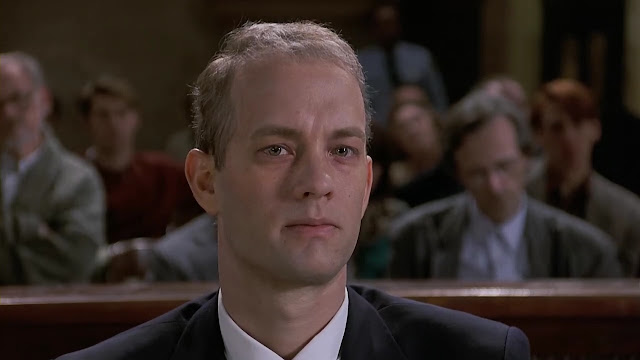 |
| Philadelphia (Jonathan Demme, 1993) |
CG: The public perception to these instances of backlash and representation is interesting. With minority groups, visibility and how they present themselves change over time.I remember reading controversies about this film being deemed ‘anti-gay’, in that transgender was seen as so miniscule while gay voices were so dominant in queer communities that ‘gay community’ was the default blanket term. Demme himself did do an apologia with Philadelphia as his follow-up to The Silence of The Lambs which, as you noted, is issue movie 101 that is a sanitized version of dying queer suffering (but also makes me cry like a baby). I think over time Demme more than proved his heart was in the right place and was always open to sharing his film as spaces for people, whether it was casting trans woman and former RuPaul’s Drag Race contestant Carmen Carrera in Ricki & The Flash or having non-binary, queer people in his frames, always feeling of place in his world.
The question is how to reclaim the cisgender gaze off of a character that is associated with one of the enduring Hollywood films of the last thirty years. I am sure Jame Gumb was the first time many cis people even came across the notion of being transgender and well, yeah, that is problematic (and to think we were going to go this whole conversation without deeming something problematic!). So its legacy is going to be a transphobic one that if not giving transphobics a charge will cause open-minded people to be judgmental about how the movie handles the subject matter. Gumb is othered and is a monstrosity, but I still would not think of him a figure to cast aside for being a character that gave our community a lot of grief. As you noted, there is split reaction in the trans community about this film and about this character. Laura Jane Grace’s band Against Me! repurposed the imagery the ‘Goodbye Horses’ scene for an LP cover and on merchandise, a trans performer reclaiming a popular, more common imagery of many cis people’s shorthand for trans people. I like that and I think that reflects an age group of trans people who, like you and I, grew up with the images of this movie and have identified with it while also grappling with how this film on transgender people and on Jame Gumb comes across to others. I think there is a fairytale quality to this movie and in some fairytales, I find the heroes to be bland and the monsters to be far more interesting. Here, I love the hero but I feel for the villain, the monster, which I think is a credit to Levine and Demme. It is a complicated relationship that I have with this film in that I did connect with the monster in a way that I am not even sure Demme intended or felt he could ask of his audience. But that is the film for me.
 |
| Against Me!’s True Trans EP |
WM: We almost made it without saying the words “problematic” haha
The last thing I want to say about this film is on images and how transgender people take in these images in terms of people within our specific age group. I can remember the first images of transgender people I saw in media being on the Jerry Springer show where he would ask audience members if this woman was actually a man or something alone those lines. Additionally, there was Ace Ventura’s final reveal that Sean Young’s character was transgender which led to vomiting. You get a little bit older and you learn about the sheer amount of movies about serial killer trans women and you internalize this image of yourself as inauthentic, perverse, and worthy only of contempt. This is what cinema and the televisual image taught me growing up. In the 1990s and even in the early 2000s there wasn’t the language to discuss these things and being transgender was not in the public eye at all.At best you would find a now embarrassing in hindsight documentary on transition on something like the Discovery channel which offered the only real possibility that you weren’t alone and you weren’t a monster. Cinema is not as important as we make it out to be, but in some cases I do think it has this definitive effect on people and self image. When the only image of people who question their gender is a negative one then negative self worth is inevitable. I think it is immensely powerful that Laura Jane Grace sought about reclaiming the image of Bill/Gumb and rechristening it as one of tragic martyrdom instead of pure evil. Like her we are trying to reshape and recontextualize the image for us and hopefully in the future by us as well. Conversations like the one we have just had are a good start.
CG: The transgender experience for me is similar with ‘trash TV’ often being my first outlet and perception. Lana Wachowski got an expose on her in Rolling Stone Magazine in the early 2000s and that was where I first came across pornstar Buck Angel. Frankly, I think Buck Angel may have been the first transgender man that I ever read about or saw that didn’t meet an untimely death. Still, the Wachowski piece is absolutely astonishing to look back at now as I don’t think it would fly today at all. It crosses so many lines in ethics and privacy. I read the letters to the editor in the following issue. There were the usual transphobic, ‘What the hell is this?’ responses. But then I came across Buck Angel’s letter to the editor. It was defiant, with a final kiss-off being a flirt to the author of the piece. I thought that was badass and one of the more unusual moments of life affirmation that I had. This was a real person who was proud and if you had a problem with that, it was on you. It’s hard to really say where the tides have turned beyond more of us being out, but there were always those little embers of representation like the late Alexis Arquette being on reality TV and being treated well by the likes of Florence Henderson. Still, those are outnumbered by negative tropes against trans people, especially trans women where it was seen as a joke to be ‘exposed’ from trying to ‘fool’ others. And then for a long time there was just nothing, invisible. So you feel a little lost in the wilderness despite knowing that something about that is so innate is out of step. Representation in cinema is just one part of the larger puzzle in acceptance and achieving a type of visibility that has lower suicide rates, lower murder rates, lower unemployment rates, and lower homeless rates. But it is necessary to examine a history of images, often so much of them negative, of who we are that has often played a role in our demonization by the mainstream. I too hope these conversations are fruitful for people who want to hear our perspectives, be it to not feel alone or consider our position and place in the culture.

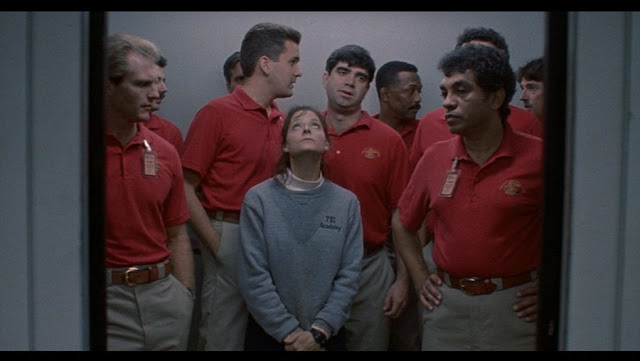
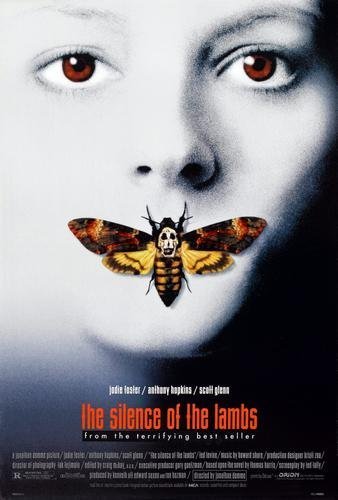
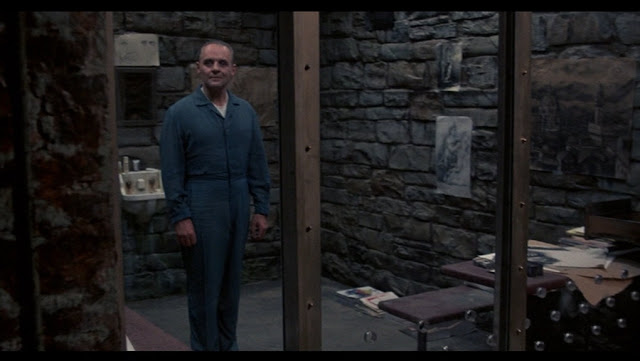
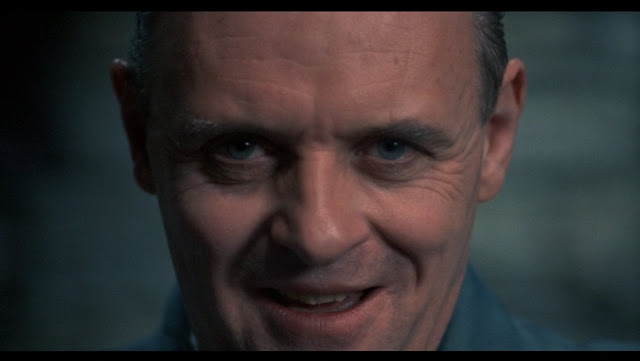
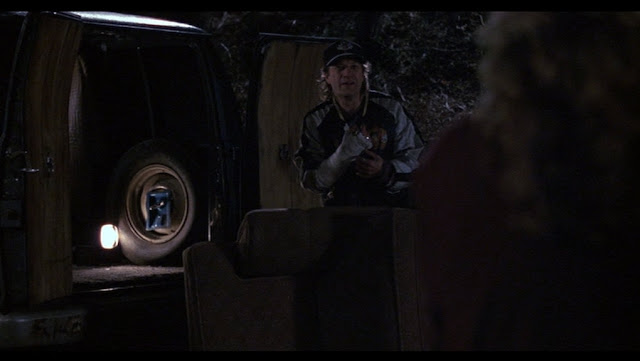

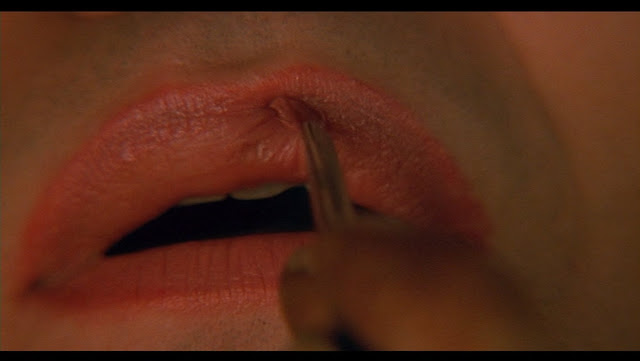
Be First to Comment